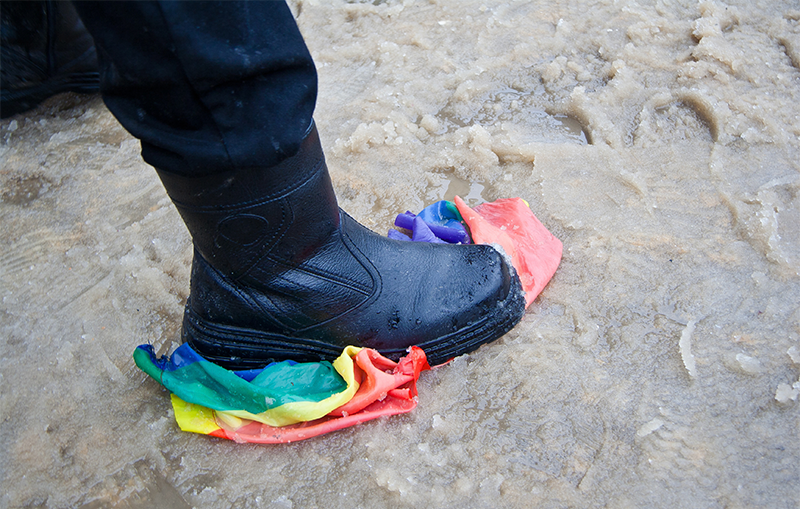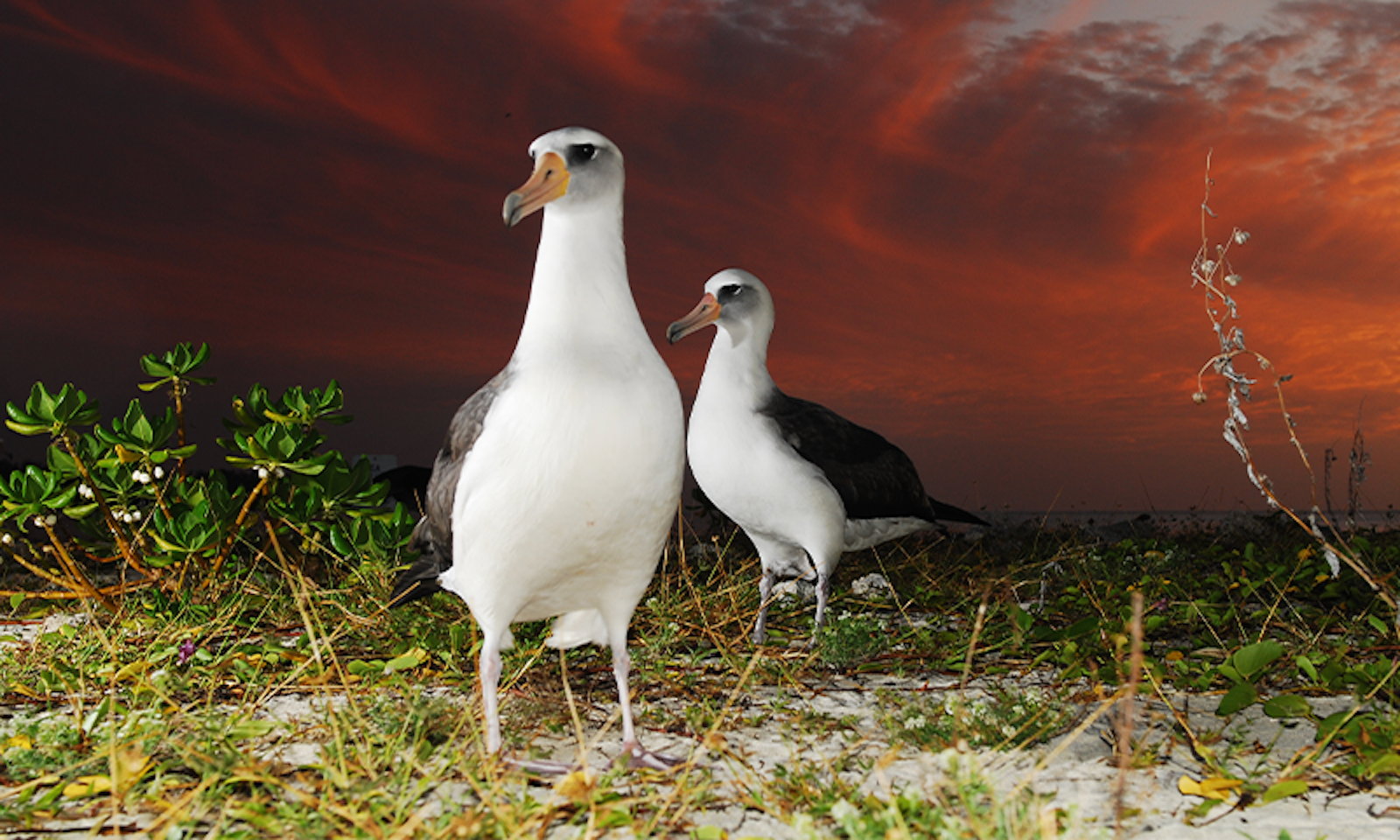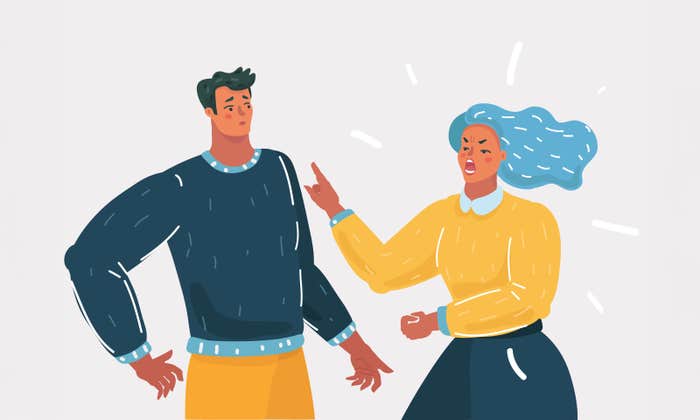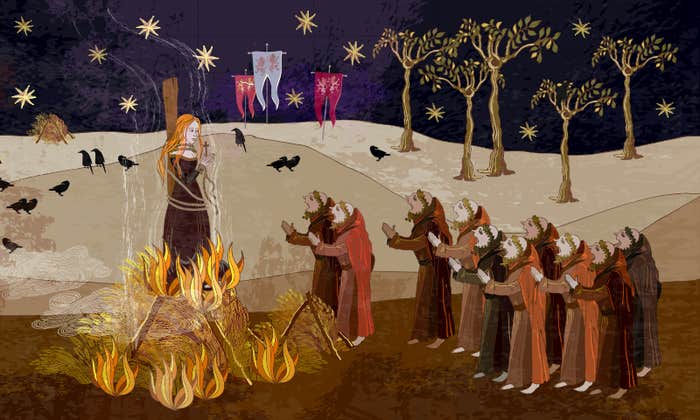Outside of humans, the best (worst?) example of repugnant same-species violence is found in chimpanzees. When compared to other nonhuman great apes, chimpanzees are notoriously bloodthirsty. I mean that literally. Rival chimpanzee groups defending their territories will engage in open battle where they will occasionally beat one another to death. But they also conduct clandestine raids into enemy territory, targeting rival males to kill. In the book Demonic Males: Apes and the Origins of Human Violence, primatologist Richard W. Wrangham and science writer Dale Peterson note that these raids are “marked by a gratuitous cruelty—tearing off pieces of skin, for example, twisting limbs until they break, and drinking a victim’s blood—reminiscent of acts that among humans are regarded as unspeakable crimes during peacetime and atrocities during war.”1
The primatologist Sarah Blaffer Hrdy describes the violent nature of chimpanzees in the opening pages of her 2011 book, Mothers and Others: The Evolutionary Origins of Mutual Understanding.2 Humans, she notes, can spend hours crowded together in an airplane without resorting to violence, even when faced with rude passengers and crying babies. “What if I were traveling with a planeload of chimpanzees?” she asks. “Any one of us would be lucky to disembark with all 10 fingers and toes still attached, with the baby still breathing and unmaimed. Bloody earlobes and other appendages would litter the aisles.” In other words, chimpanzees are terribly violent and often outright murderous, and they inflict this upon one another.
While same-sex attraction is not unique to humans, homophobia is.
But even this behavior pales in comparison to the kind of violence that humans exhibit, and our moral reasoning justifies it. Chimpanzees have never been observed killing every individual (males and females, juveniles and newborns) within a rival group; the unspoken behavioral rule or norm that chimpanzees live by when they battle is to only remove a select few individuals (usually the adult males) so as to make the rival group less of a threat. Perhaps, if they had the humanlike cognitive abilities that allowed them to formalize their norms into morals, these raids would be far more expansive and destructive. But they don’t. In contrast, when humans go to battle, they justify the killing of entire cities filled with noncombatants (including children) if it serves the greater (morally defensible) goal of winning the war in order to bring about peace.
This is how we ended up with the infamous quote, “It became necessary to destroy the town to save it,” spoken by a United States Army major when justifying the bombing of Bến Tre during the Vietnam War despite there being children in the town.3 Like so many human moral decisions, the Army’s decision to kill civilians emerged from our unique capacity for moral reasoning (i.e., the ability to formalize, analyze, revise, and propagate normative behavior on a large scale), a skill that chimpanzees lack, and the reason that even our most violent animal cousins are still less violent than us. While it’s entirely true that the human capacity for cooperation is why, as Hrdy argues in Mothers and Others, “face-to-face killings are a much harder sell for humans than for chimpanzees,” and why, despite 1.6 billion airline passengers every year, “no dismemberments have been reported yet,” it is also this human capacity for cooperation that gives humans (but not chimpanzees) the ability to bomb the children of Bến Tre.2
But to drive my point home that humans often wind up with unnecessarily violent behavioral norms due to our complex ability for moral reasoning, I don’t want to talk about war. I want to talk about homosexuality. In the introduction to the book The Biology of Homosexuality, the biologist Jacques Balthazart writes that “homosexuality in humans is to a very large extent, if not exclusively, determined by biological factors acting prenatally or soon after birth.” Balthazart arrives at this conclusion through the study of same-sex sexual behavior in animals, where there is a mountain of evidence showing that not only is homosexuality not unique to humans, but it’s rather the norm for most animal species. This is old news for scientists studying animal behavior and biology, which is why Balthazart writes, “Scientists reading this book will think, ‘We have heard all this before.’… But somehow that information has either not made its way into the world outside the laboratory or has not been presented in a sufficiently definitive matter to affect the general population’s view on the matter.”
Animals have a superior—less violent—system for dealing with differences than humans.
He’s right. I’m surprised at the number of people I talk to about animal behavior that are shocked at how common homosexual behavior is in the animal kingdom. I often point gay animal skeptics to Biological Exuberance by Bruce Bagemihl—a 1999 book detailing more than 300 different animal species that engage in a diverse array of behaviors that fall under the umbrella of homosexuality. Everything from same-sex sex, affection, pair bonds, and parenting. It might seem odd that homosexuality should be so widespread given that evolution is based on the need for animals to produce offspring. This is often a topic broached by anti-gay groups hoping to (misguidedly) show that same-sex behavior is not “natural.” But the literature on animal homosexuality shows that same-sex sexual behavior in a given species does not negatively impact a species’ reproductive rates, so it’s a non-issue.
Take the example of the Laysan albatross. This species of giant bird forms lifelong pair bonds—where two individuals stay together for life, mating and raising offspring together over the course of many decades. Some of these lifelong pair bonds are between same-sex couples. In one study of Laysan albatrosses living on Oahu, one-third of the lifelong pairs were female same-sex couples.4 In many of these cases, however, one or both females would mate with a male at some point, resulting in fertilized eggs that the female pairs raised together. Many of the cases of homosexuality in the animal kingdom work like this, where same-sex behaviors are just part of an individual’s typical behavioral repertoire, and reproduction still occurs to ensure species survival. Bonobos are perhaps the best example: Individuals engage in sex between same- and opposite-sex partners on a regular basis, resulting in lots of gayness, but also lots of babies.
Exclusive attraction to members of the same sex is rarer, but not unheard of. In domestic sheep, it’s estimated that 10 percent of rams (the males) are only interested in mating with other rams.5 Researchers studying this phenomenon found that these gay rams had differences in their brains—a thicker cluster of neurons in part of their hypothalamus—when compared to straight sheep. The reason for the differences being the relative amount of estrogen levels that the developing ram was exposed to before birth. In other words, as Balthazart argues in his book, these rams were born gay. All this to say that there’s nothing particularly unusual or controversial about (inborn) gayness in the animal kingdom.
Despite the frequency with which it crops up, same-sex attraction does not threaten the survival of the hundreds of species for which homosexuality has been observed. Which is why no animal species seems to have evolved any social norms around punishing individuals for engaging in same-sex acts. In other words, while same-sex attraction is not unique to humans, homophobia is.

Of course, there are many past and present cultures where homosexuality is normalized, accepted, and even embraced. Throughout most of Japanese history, for example, same-sex relationships have not been stigmatized, and stories of male-male love and sex have long been associated with the samurai warrior class.6 But in many modern cultures—and especially Western European, Middle Eastern, and African cultures with Judeo-Christian roots—homosexuality is not just socially unacceptable or controversial, but illegal and punishable by death. Iran’s Islamic Penal Code—enacted after the Islamic revolution of 1979—declares gay sex between men a capital offense, penalized by execution. A Pew Research Center poll from 2013 found that many Middle Eastern countries have negative views of homosexuality, with 97 percent of people in Jordan, 95 percent in Egypt, and 80 percent in Lebanon believing that homosexuality “should be rejected.”7
Even in current Western countries ostensibly tolerant of LGBTQ people, anti-gay sentiment abounds, rooted in Judeo-Christian values. Conversion therapy—an attempt to change people’s unwanted and “unnatural” sexual orientation through various forms of “therapy”—is often aimed at minors, and is legal in most parts of the United States. It is often administered by Christian faith-based therapists, even though, according to a 2009 report by the American Psychological Association Task Force, “results of scientifically valid research indicate that it is unlikely that individuals will be able to reduce same-sex attractions or increase other-sex sexual attractions through [conversion therapy].”8
It’s not the case that this moral rejection of homosexuality always has religious origins. The Nazis famously did not approve of homosexuality (especially male homosexuality) for the simple reason that it deviated from the norm, and anything abnormal was simply not fit for inclusion in the Third Reich. Subsequently, more than 100,000 gay men were arrested, and tens of thousands were executed in concentration camps.
Human moral reasoning might be a bug and not a feature.
The reality is that, in recent history, millions of humans around the globe have suffered violence or death because of anti-gay sentiment. LGBTQ people are four times more likely than the general population to be the victims of violent crime, and that’s just in the U.S., where homosexual behavior is no longer criminalized, and where corporations like McDonald’s proudly fly rainbow flags during Pride Month.9 One can only speculate what the rates of violence must be in countries like Russia (which does not compile data on homophobic attacks), where a 2018 survey found that 63 percent of Russians believed that gays were conspiring to “destroy the spiritual values generated by Russians, through the propaganda of nontraditional sexual relations,”10 and 1 in 5 Russians believed that gays should be “eliminated.”11 And all this despite the fact that homosexuality is just as common in humans as it is in other species. Around 7 percent of people in the U.S. self-identify as lesbian, gay, or bisexual, while more than 8 percent of people in the report had engaged in same-sex sexual behavior, and 11 percent acknowledged at least some attraction to the opposite sex.12 These numbers are right on par with sheep, but significantly lower than the same-sex activity found in bonobos.
The conclusion here is that humans, through our complex capacity for moral thinking, have taken something that does not constitute a normative problem for any other species and turned it into an issue which we use to justify marginalization, criminalization, execution, and even genocide. This is, I argue, a case of animals having a far superior—that is, less violent and destructive—normative system for dealing with difference than almost all human cultures. Homosexuality is quite clearly not just normal in the animal world, but entirely non-destructive. Maybe even beneficial for maintaining animal societies.
Why, then, are humans uniquely homophobic? It’s a mystery that can only be solved if you understand how we can reason ourselves into a corner via our capacity for moral thinking. A handful of cultures and religions have convinced themselves that homosexuality is a moral problem, and millions of our fellow humans suffer because of it. Not only does anti-gay sentiment have no real counterpart in the behavior of any other species, but it actively creates barriers to our species’ success. It not only sows societal discord but leads to the suffering of a large swath of the human population. What biological benefit has been given to our species through our bizarre moral posturing around the non-problem “problem” of homosexuality? Precisely none. It is a sad testament to the cruelty of human moral reasoning.
The history of our species is the story of the moral justification of violent acts resulting in the pain, suffering, and deaths for billions of our fellow humans who fall into the category of “other.” That could be the Indigenous peoples, the LGBTQ community, Jews, Blacks, the disabled, women, etc. In contrast, most animal norms exist to maintain a social equilibrium that minimizes the need for pain, suffering, and death. If we operate from the base principle that pain, suffering, and death is generally a bad thing, then it seems as if animals have the right idea (and the higher moral ground) most of the time. But does this mean that human morality is “bad” in the evolutionary sense? Could it be the case that our capacity for moral reasoning—our philosophy, religions, and legal structures—is precisely the thing that gave our species the edge these past few millennia? The thing that has helped us organize our societies and spread across the globe in our great civilizations?
I don’t think it was our moral capacity per se that was responsible for our success, but the other components of the human mind that gave us the ability to coordinate our efforts, like language and theory of mind. And it was our unique capacity for causal reasoning that did the heavy lifting when it came to divining the nature of the physical universe and the biological world, giving us the technological know-how that put our species on the map. Human morality, in contrast, wasn’t necessary for any of this. As I’ve been arguing, I think we would’ve been better off without the ability to turn our ancient primate norms into absurd and destructive moral rules that gave us things like anti-LGBTQ legislation. But you can’t unlink these things. You cannot have that laundry list of positive cognitive skills without the negative consequences.
Human moral reasoning was unavoidable. But that doesn’t necessarily make it good, in an evolutionary sense. Human moral reasoning might be a bug and not a feature—an evolutionary spandrel that cropped up as our unique cognitive skills blossomed, but not itself a trait that natural selection selected for. Humans might currently be succeeding as a species not because of, but despite, our moral aptitude. We have taken this universal normative system that governs and constrains social behavior for most animals to weird extremes. Animals, with their less sophisticated normative systems, are the ones living the good life. ![]()
Justin Gregg is a senior research associate with the Dolphin Communication Project and an adjunct professor at St. Francis Xavier University, where he lectures on animal behavior and cognition.
Excerpted from If Nietzsche Were a Narwhal by Justin Gregg. Copyright © 2022 by Justin Gregg. Used with permission of Little, Brown and Company, an imprint of Hachette Book Group. New York, NY. All rights reserved.
Lead image: Porco_Rosso / Shutterstock
References
1. Wrangham, R.W. & Peterson, D. Demonic Males: Apes and the Origins of Human Violence Houghton Mifflin Harcourt, New York, NY (1996).
2. Hrdy, S.B. Mothers and Others Harvard University Press, Cambridge, MA (2011).
3. Associated Press. Major describes moves. Associated Press (Feb. 8, 1968).
4. Young, L.C., Zaun, B.J., & VanderWerf, E.A. Successful same-sex pairing in Laysan albatross. Biology Letters 4, 323–325 (2008).
5. Resko, J.A., Perkins, A., Roselli, C, & Fitzgerald, J.A. Endocrine correlates of partner preference behavior in rams. Biology of Reproduction 55, 120–126 (1996).
6. Leupp, G.P. Male Colors University of California Press, Oakland, CA (1995).
7. A.L. How homosexuality became a crime in the Middle East. The Economist (2018).
8. Glassgold, J.M., et al. Report of the American Psychological Association Task Force on appropriate therapeutic responses to sexual orientation. apa.org (2009).
9. Flores, A.R., Langton, L., Meyer, I.H., & Romero, A.P. Victimization rates and traits of sexual and gender minorities in the United States: Results from the National Crime Victimization Survey, 2017. Science Advances 6, eaba6910 2020).
10. Translated from wciom.ru/analytical-reviews/analiticheskii-obzor/teoriya-zagovora-protiv-rossii-
11. Kuhr, E., 1 in 5 Russians want gays and lesbians “eliminated,” survey finds. nbcnews.com (2020).
12. Gates, G.J. How many people are lesbian, gay, bisexual and transgender? The Williams Institute (2011).


























